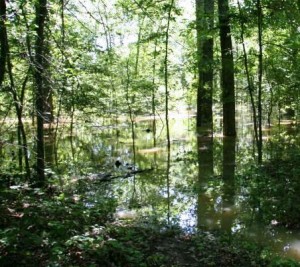 We’ve just had some heavy rains in the Twin Cities, and from the weather forecast there’s more to come this week. Some areas have flood warnings, so if you’re near water, keep an eye out.
We’ve just had some heavy rains in the Twin Cities, and from the weather forecast there’s more to come this week. Some areas have flood warnings, so if you’re near water, keep an eye out.
There’s no avoiding spring rain in Minnesota, but when it comes so soon after the ground as thawed, it can cause damage, from plant loss to interior water damage. This can happen even if you’re not near a river or lake, because excess water is hard for thawing ground to absorb. We’ve found that the most effective way to handle this problem is through proper landscaping.
Why Landscaping Matters
The main cause of basement flooding is improperly graded yards. Land has natural peaks and valleys, but when builders work on a house, the yard can end up with the wrong grade. If the land slants towards the house, water naturally drains to it. If there are dips in the land, this encourages water to collect, and eventually spill into the foundation. Once water gets inside, floor boards will warp, appliances will warp, and mold and mildew will grow.
Rerouting Water
Before you start digging, take a look at your gutters and downspouts. If they’re not functioning properly, water can be coming off the roof and landing right by the building’s foundations. An easy way to remedy this problem is to install sloped leaders to the gutters and set them to lead water at least 10 feet away from the home.
You can also alter your downspouts so they empty into an either above or below ground basin to be used later. Rain barrels are also a great option.
Regrading
If your gutters and downspouts are alright, then it’s time to fix the yard’s grade. If there are too many low points in your yard, regrade for one inch per every five square feet of land.
Another option includes exterior perimeter drains, which can be either surface or subsurface. If your soil is mostly clay, the surface option is best for you, while soil which is primarily sand or silt works better with subsurface drainage.
While you may be able to correct smaller flooding issues, if they’re too severe, it’s time to call a professional in. The expense of having someone else fix the problem is minimal when compared to the cost of repairing water damage.
If you notice areas of standing water from the recent rains, even after the rest of your yard has dried up, you may want to arrange for an on-site consultation to discuss drainage solutions.
